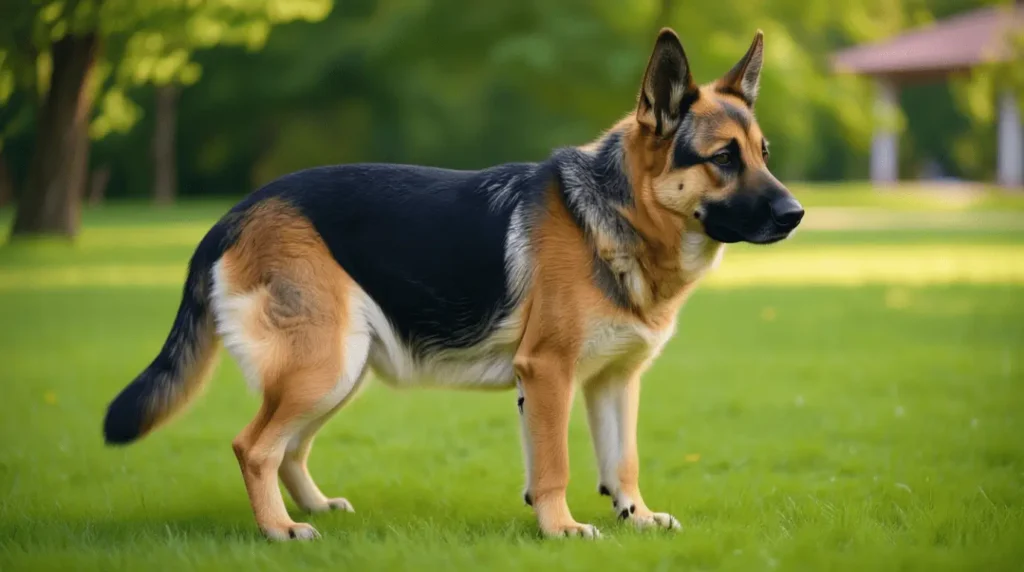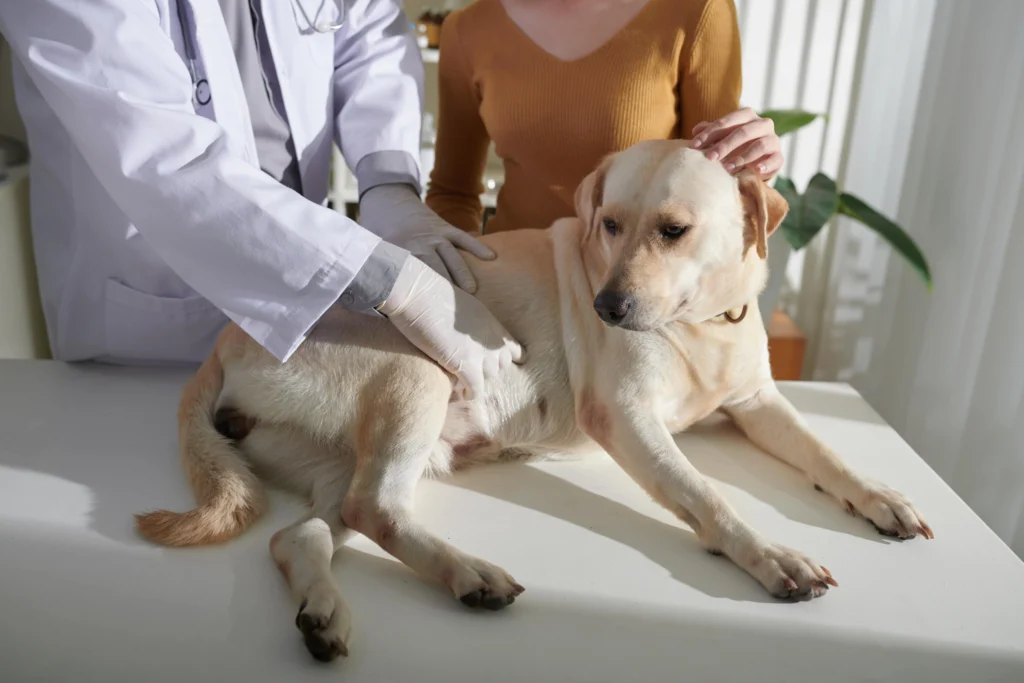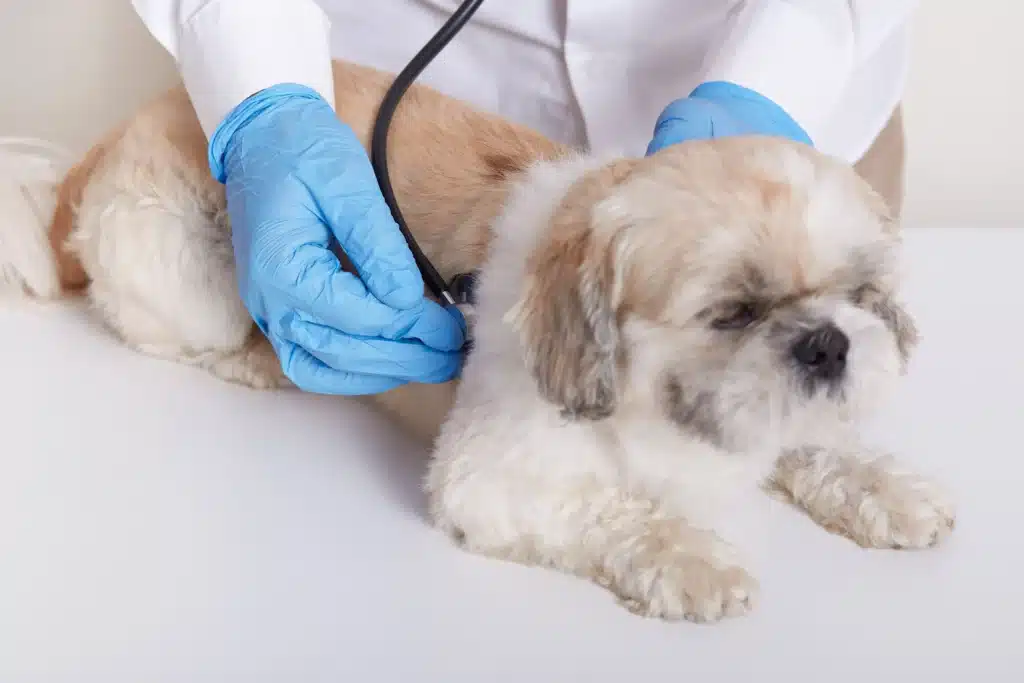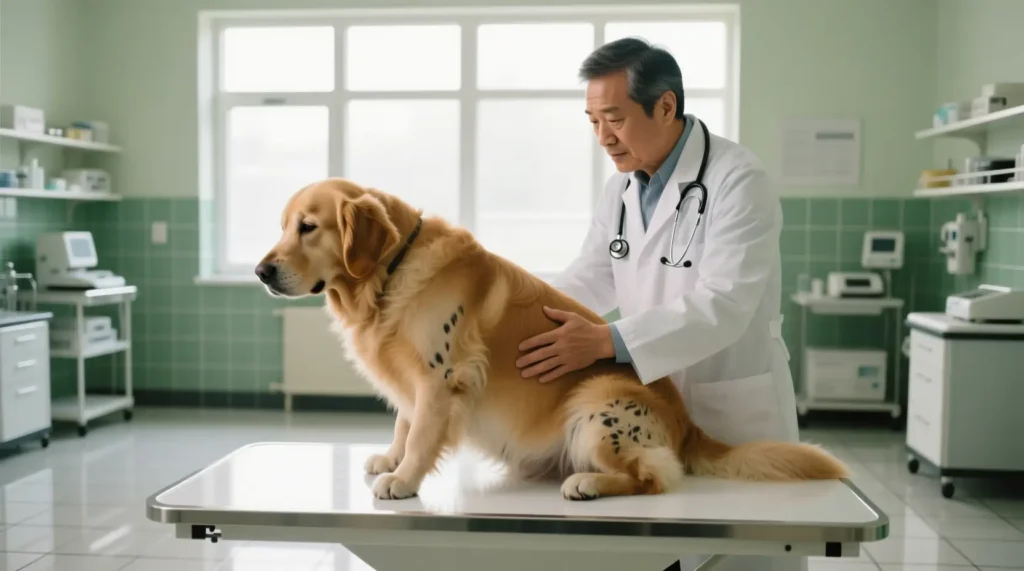1. Introduction
Hip dysplasia is one of the most frequent orthopaedic diseases in dogs, especially in large-breed dogs. It is a developmental disease in which the hip joint is not formed correctly, resulting in pain, loss of mobility, and secondary osteoarthritis. For dog owners and dog breeders, it is important to understand the pathology, diagnosis, and treatment (Smith et al., 2020).
2. What Is Hip Dysplasia?
Definition & Mechanism
Canine hip dysplasia (CHD) is a complex developmental condition resulting from hip joint laxity that leads to osteoarthritis (Smith et al., 2020). The femoral head (“the ball”) fails to properly articulate in the acetabulum (“the socket”), causing instability, cartilage wear, and bone remodelling over time.
Causes and Risk Factors
Genetic Factors
Hip dysplasia is usually classified as polygenic, where multiple genes contribute to the condition. Selective breeding programs utilising hip scoring methods have contributed to the reduction in incidence of the disease in some breed types (Lewis et al., 2019).
Environmental Factors
Whether a dog with a genetic predisposition develops the disease will depend on environmental factors:
- Rapid growth/over-nutrition in puppies increases risk (Kealy et al., 2020).
- Obesity increases the load on the hip and accelerates degeneration (Anderson et al., 2023).
- Excessive or inappropriate exercise during periods of growth can cause increased stress on the hip joint.
- Skeletal conformation, with shallow complement sockets or a femoral neck angle that is varied, can also increase the risk (Anderson et al., 2023).
Breeds Most Affected
Large and giant breeds of dogs , such as German Shepherds, Labradors, and Rottweilers, are most commonly affected, though smaller breeds also develop hip dysplasia (Smith et al., 2020). Prevalence does vary considerably, because in some breeds up to 70% of dogs could develop the hips if not screened (Lewis et al., 2019).
Clinical Signs
Early Signs
- Not wanting to jump or go up or down stairs
- Weakness of the hind limbs (showing a “bunny hop” trot)
- Stiffness after periods of rest
Advanced Signs
- Marked lameness
- Muscle wasting in the hindlimbs
- Secondary arthritis and chronic pain (Anderson et al., 2023).
Notably, radiographic changes may not always hold a direct relationship with the severity of symptoms; therefore, some dogs appear clinically worse compared to their X-ray response.

Diagnosis
- Ortolani and Barlow tests can be performed in young dogs and will report joint laxity.
- Hip-extended X-rays are a common and acceptable imaging technique to assess stability, but are less sensitive to early physiological changes (Smith et al., 2020).
- The distraction index is commonly used to quantify laxity and, therefore, is a more reliable predictor of osteoarthritis (Anderson et al., 2023).
- Have developed new methods, such as 3D shape modelling to evaluate the shape of joints, all of which can use AI concepts (Wang et al., 2025).
Treatment and Management
Non-Surgical
- Weight management is the single most beneficial lifestyle modification (Kealy et al., 2020).
- Physiotherapy, such as swimming and controlled walks, may be beneficial to help maintain a level of muscle support to the joints.
- Pain management (NSAIDs, supplements, etc.), support or comfort are all likely to improve comfort (Anderson et al., 2023).
- Regenerative medicine (stem cells and platelet-rich plasma) is promising; however, it remains experimental in nature (Smith et al., 2020).
Surgical Options
- Juvenile Pubic Symphysiodesis (JPS): will change the development of the pelvic growth and theoretically would be best in puppies that are <20 weeks of age.
- Triple Pelvic Osteotomy (TPO): will rotate the acetabulum to provide better coverage in young dogs (Smith et al., 2020).
- Femoral Head and Neck Excision (FHO): Removes the femoral head to reduce pain, used in smaller dogs.
- Total Hip Replacement (THR): Gold standard for severe cases; restores near-normal function (Anderson et al., 2023).
Prognosis & Prevention
In many cases, dogs will lead active lives with early intervention. Proactive prevention strategies involve responsible breeding practices using hip scoring, careful management of growth, and early screening in breeds at risk of developmental disease (Lewis et al., 2019).
Future Directions
- 3D shape modelling for earlier detection (Wang et al., 2025).
- Genetic marker research for selective breeding (Lewis et al., 2019).
- Stem cell therapies for cartilage repair.
- AI-based diagnostics to standardize screening.
Conclusion
Hip dysplasia is still a serious health problem in dogs globally, but we have made advancements in our diagnostic, breeding programs, and surgical procedures, which are improving the outcomes of dogs with hip dysplasia. The largest potential impact can be made by the owners who will manage their dog’s weight, activity level, and early veterinary screening. For breeders, responsible genetic selection is the most effective long-term solution for hip dysplasia.
References
- Anderson, K. L., Zulch, H., & Holmes, M. A. (2023). Canine hip dysplasia: Risk factors, diagnosis, and management strategies. BMC Veterinary Research, 19(1), 211. https://doi.org/10.1186/s12917-023-03777-z
- Kealy, R. D., Lawler, D. F., Ballam, J. M., & Lust, G. (2020). Effects of diet restriction on development of hip dysplasia in growing dogs. Journal of the American Veterinary Medical Association, 256(3), 267–275.
- Lewis, T. W., Blott, S. C., & Woolliams, J. A. (2019). Genetic evaluation of hip score in UK Labrador Retrievers. Frontiers in Veterinary Science, 6, 490. https://doi.org/10.3389/fvets.2019.00490
- Smith, G. K., Paster, E. R., Powers, M. Y., Lawler, D. F., Biery, D. N., Shofer, F. S., & Gregor, T. P. (2020). Pathogenesis, diagnosis, and control of canine hip dysplasia. Veterinary Clinics of North America: Small Animal Practice, 50(6), 1059–1079.
- Wang, H., Li, Z., & Zhao, Y. (2025). Statistical shape modeling for early detection of canine hip dysplasia. Computational Veterinary Imaging Journal, 12(1), 44–59.


